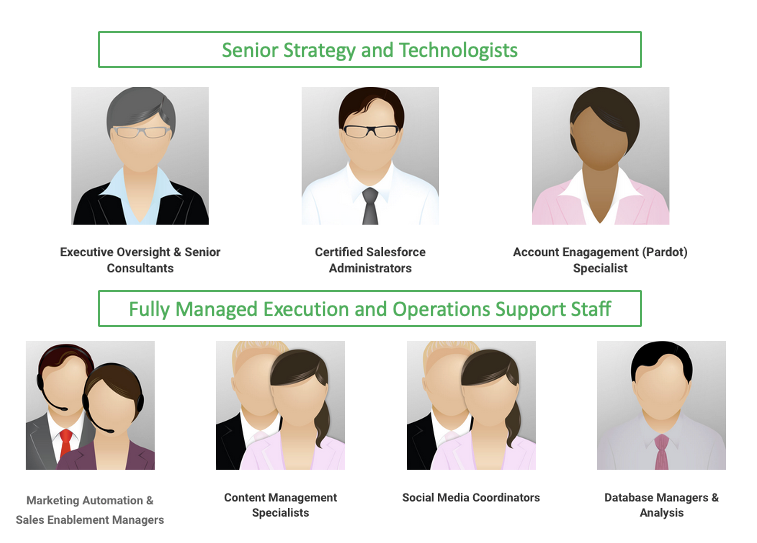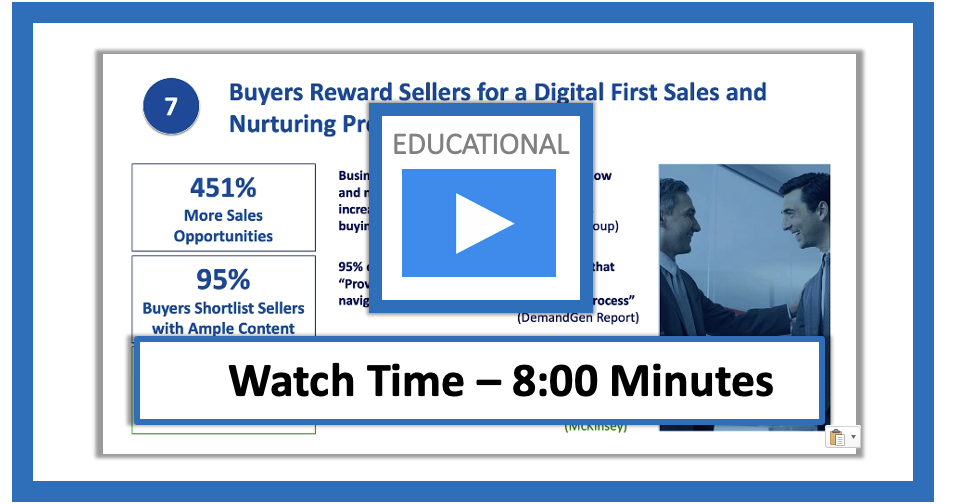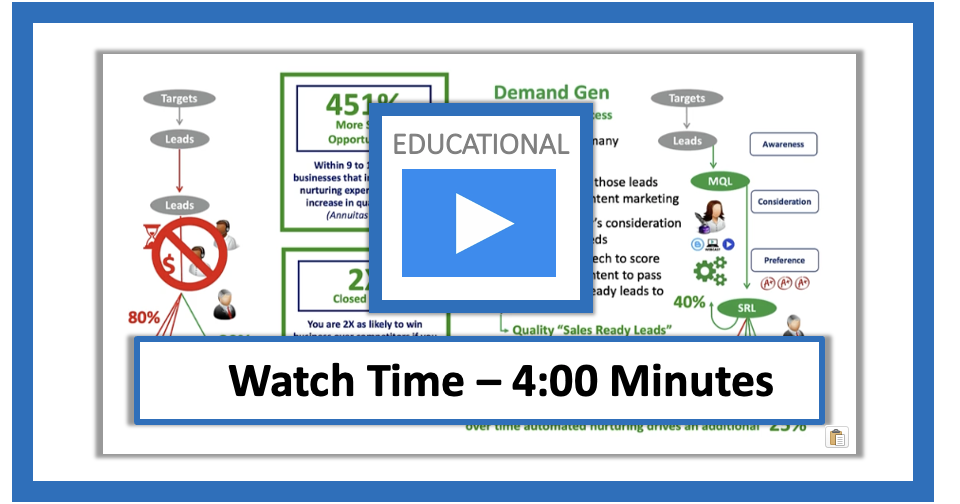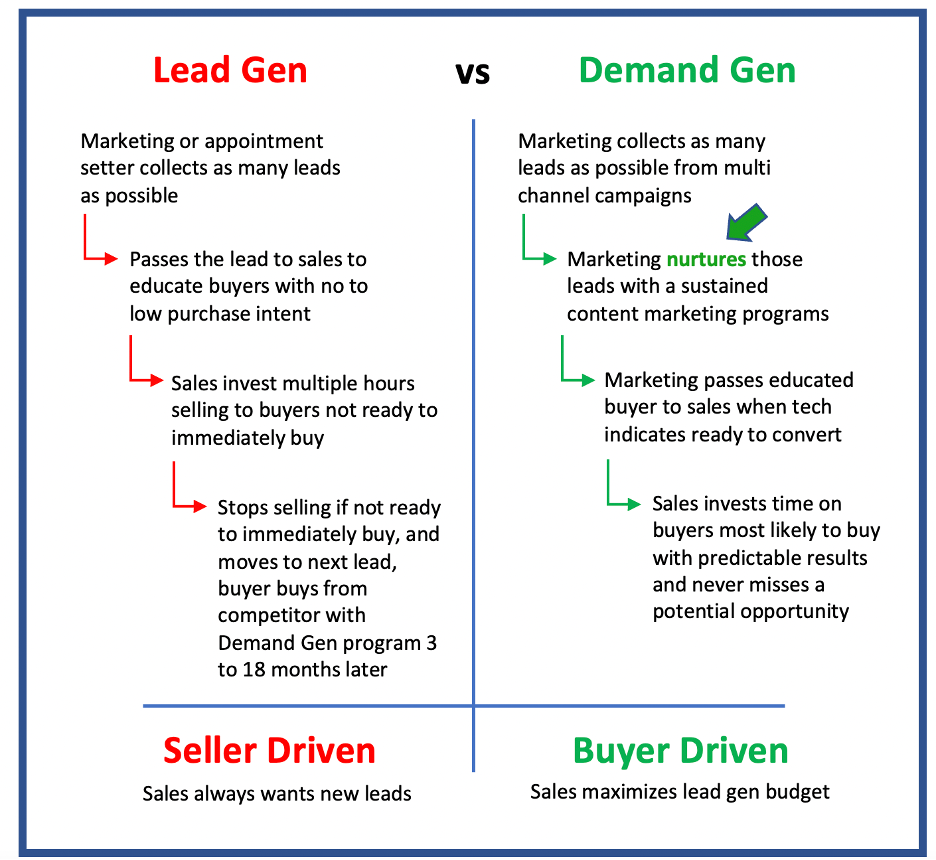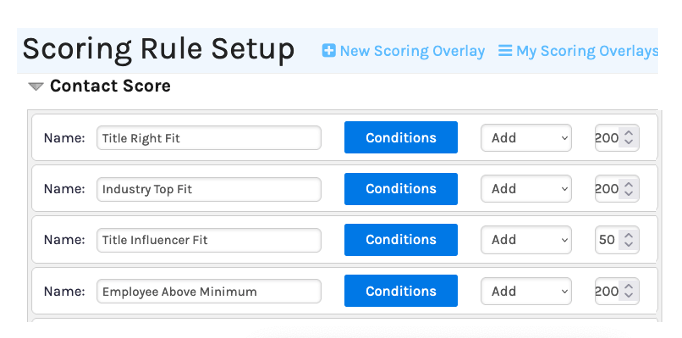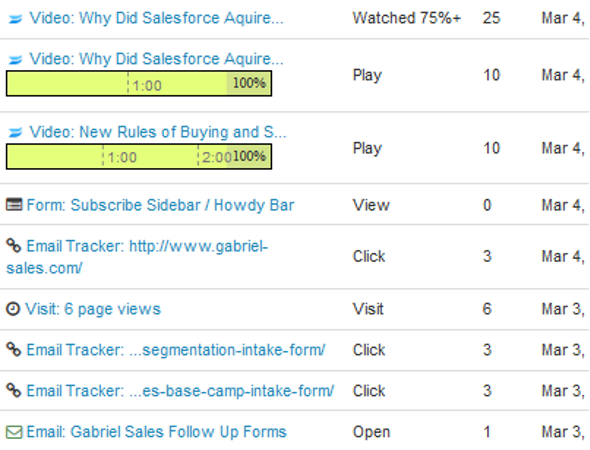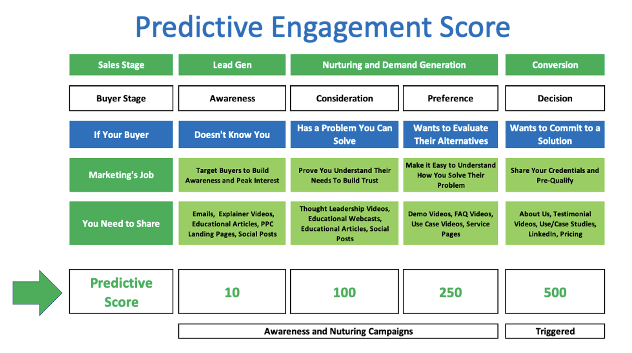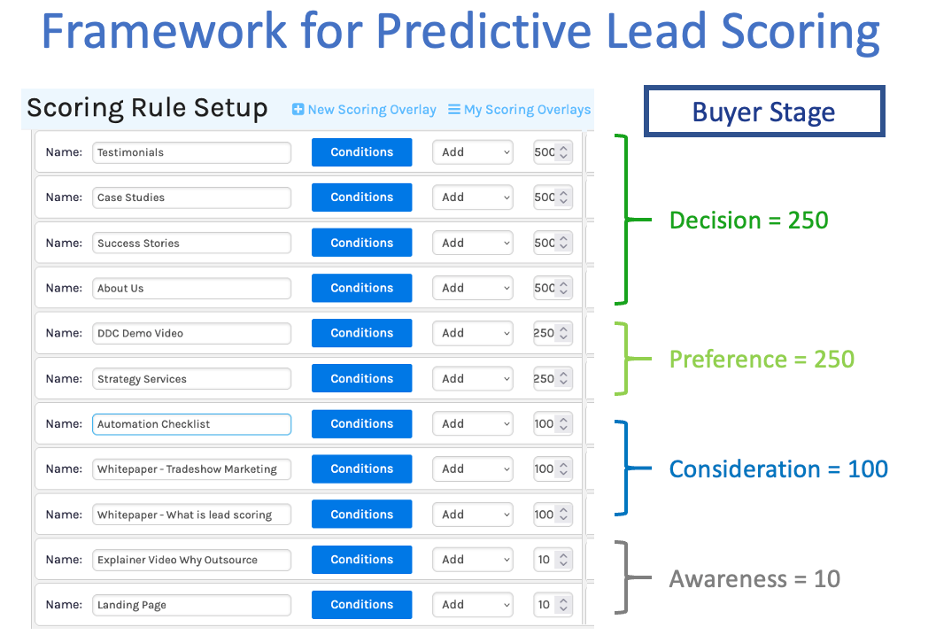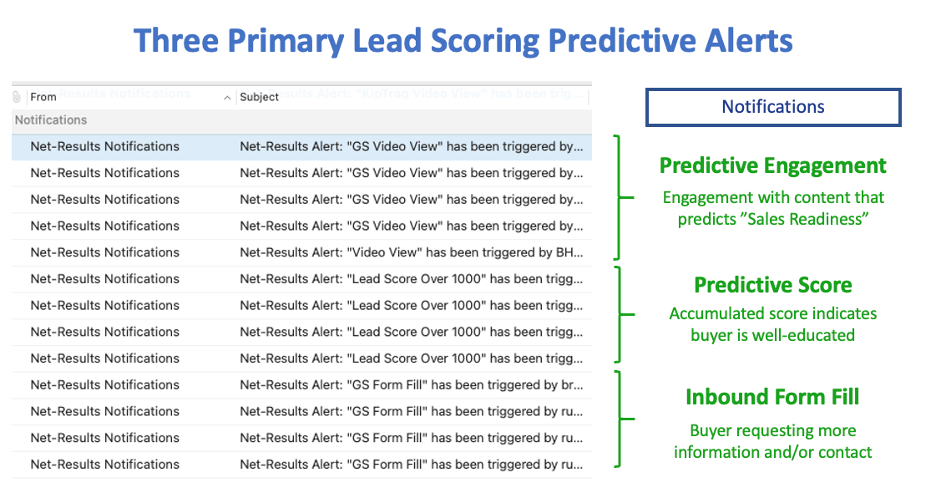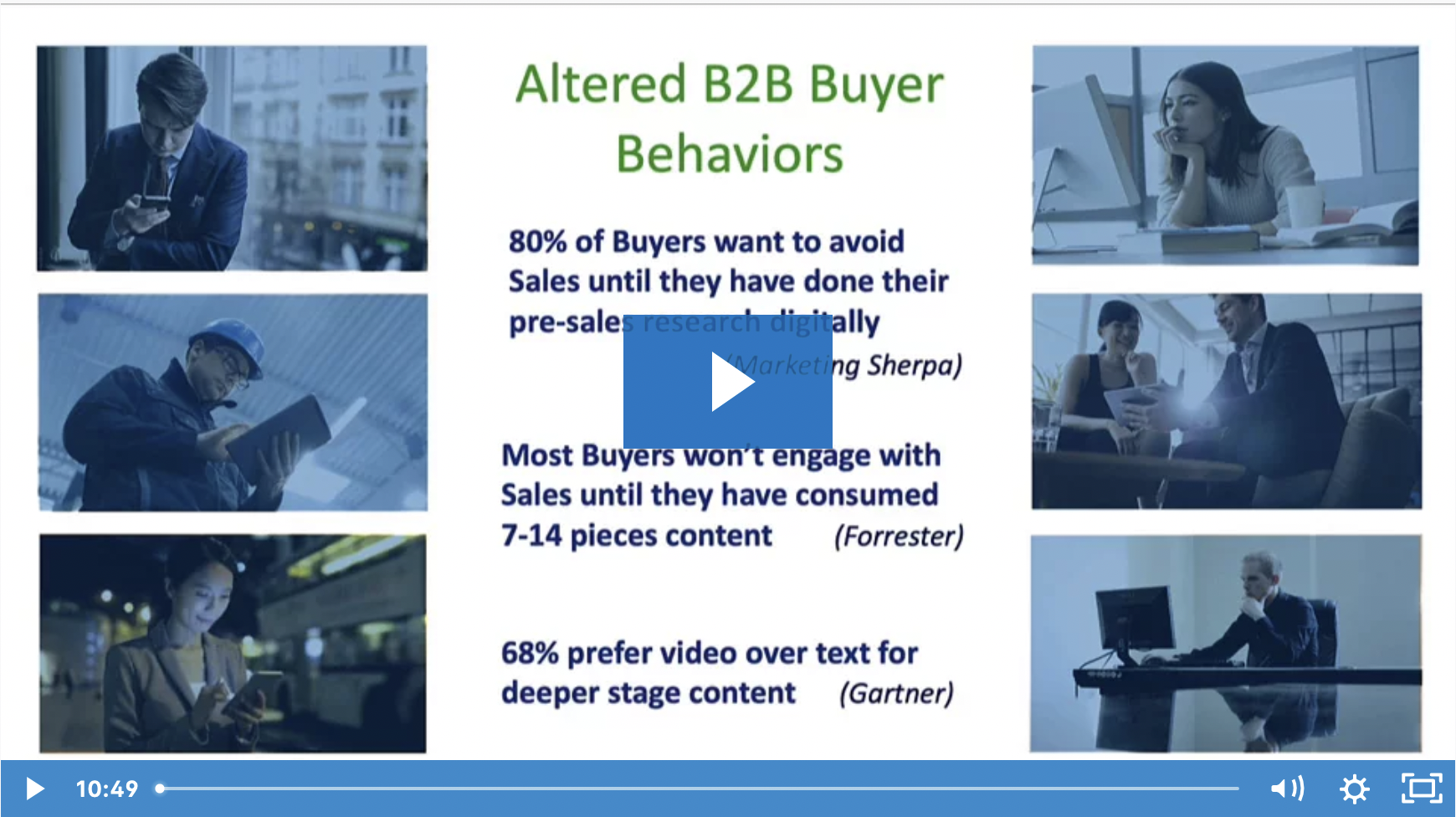
Reasons to Consider Outsourcing Sales and Marketing Operations
For many businesses ready for growth, it’s fairly typical to consider outsourcing sales and marketing operations along with other various business functions including: human resources, accounting and IT. Historically, when it comes to scaling sales and marketing operations, most companies initially consider building a team of dedicated in-house sales and marketing professionals.
But over the past several years, the requirements of B2B buyers have significantly changed. Buyers now expect to be able to educate themselves digitally online across multiple channels. Once they demonstrate interest, they also expect marketing to continue to support their buyer journey with continued digital education.
Buyers changed expectations, needs and desires which has blurred the line between marketing and sales functions. It has changed accountability and responsibilities for generating leads, developing opportunities and qualifying buyers ready to engage with sales. First, we will discuss how this has created multiple complexities for the historical model for sales and marketing operations.The rest of this article will then build on these complexities as we discuss:
Marketing operations and marketing automation
How do we decide if we should outsource
Why Marketing and Sales Operations Is Getting More Complex
The lines between marketing and sales operations are becoming increasingly blurred. Marketing is no longer limited to brand awareness and lead generation. During the pandemic, the Fortune 500 shifted towards a digital-first sales process, tasking marketers with generating leads and then developing them through a combination of content marketing and marketing automation.
As a direct result, B2B marketing organizations are taking on expanded tasks and responsibilities. Sales and marketing leadership, including Chief Revenue Officers (CROs), executives, and creative teams, are tasked with:
- Creating content strategies
- Creating lead generation strategies
- Selecting media vendors
- Continuing to generate leads across multiple channels
- Creating quality content and developing thought leaders
- Planning and running events
- Generating leads
- Nurturing leads
- Crafting personalized journeys
- Transiting leads to sales when they are educated and ready to buy
- Selecting and managing tech platforms
- Maintaining quality data
- Expanding their volume of reports
- Measuring ROI across channels
- Making smarter decisions
- Forecasting
- Supporting existing customers
- Cross selling
- Upselling
- Creating brand strategies
Marketing Operations and Marketing Automation
What is modern marketing and sales operations today?
Marketing and sales operations encompass the processes, technology, and human resources needed to execute strategies that support sales and marketing efforts with quality and consistency. Marketing operations serve as the backbone, leveraging people and technology to execute campaigns, manage the technology stack, and oversee databases, data governance and reporting. Marketing and sales operations enable:
-
- Marketing leaders and managers to concentrate on high-value strategic tasks, creative development, and content creation
- Sales teams to dedicate their time to advancing high-quality leads through the pipeline
Marketing and sales operations is an organizational approach that enables marketers to generate more demand for their products and services, support the buyer’s journey, guide buyers further into the sales funnel, and spend more time on analysis and continuous improvement. It establishes a foundation for excellence and growth, ensuring strategies are executed using best practices to drive growth and achieve both marketing benchmarks and sales targets.
The key to successful B2B marketing and sales operations is the effective daily use and integration of marketing automation and customer relationship management systems.
The growth of marketing automation makes it challenging to find proven talent
As of this year, 60% of B2B organizations intend to increase their spending on marketing automation in the coming year (Statista)
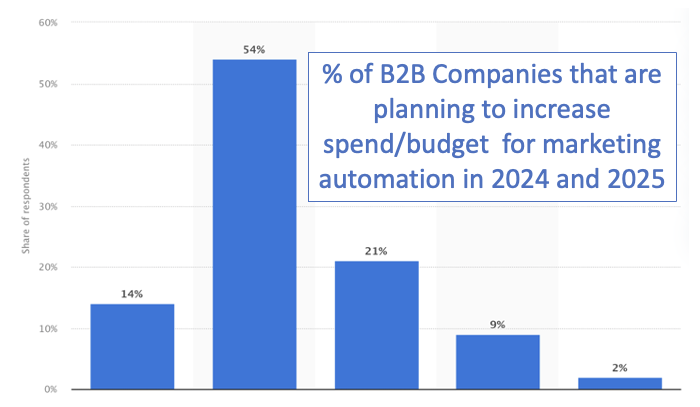
Additionally, 72% of marketing operations and marketing automation specialists have less than two years of experience, and 41% are learning on the job.
Finding quality talent with legitimate and proven experience will continue to be challenging.
How Do We Decide if Outsourcing Marketing is the Right Solution for Our Company?
As businesses continue to expand, invest in digital marketing and sales processes, create more content, and enhance productivity to all designed to help them survive, thrive and compete more effectively in the coming years, they will eventually face the following questions:
- Should we build and staff digital marketing and sales operations in-house?
- Should we consider outsourcing sales or marketing?
- Should we consider outsourcing sales and marketing operations?
- What areas or functions should we consider outsourcing?
- What are the benefits of outsourcing?
It’s a difficult question to answer because there is no turnkey solution that works across all industries and for businesses of all sizes. The decision to outsource depends primarily on:
- The existing internal resources of the business
- The proven focus areas of current partners
- The skill sets of employees and management
- The technology experience and expertise of existing employees and management
- Most importantly, where existing employees and managers can provide the greatest strategic value for the organization
What Functions/Parts Of Sales And Marketing Operations Can We Outsource
Most companies committed to a digital-first go-to-marketing and sales strategy have created leadership and management teams that are highly skilled and experience in:
- Developing strategies across multiple channels
- Creating content tailored to various channels
- Generating the volume of inbound leads needed for success
- Making intelligent decisions to maximize investments when armed with reliable data
But as discussed above, experienced marketing and sales operations talent and marketing automation technology experience is hard to find. And according to Robert Half finding skilled digital marketers and experienced marketing automation talent are two of the top three employees companies are challenged to find.
With the evolution of CRMs like Salesforce and the rise of marketing operations and Salesforce consultancies like Gabriel Sales, companies can now explore marketing automation support and outsourced sales and marketing operations to help take their organizations to the next level. These functions fall into two categories:
Outsourced Technology Implementation and Optimization – The technical delivery of specific marketing automation applications, marketing technology integrations, and Salesforce integrations ensures that your sales and marketing systems are customized to execute the strategic goals of the organization.
Marketing Operations Managed Services – Once your systems are optimized, they must be leveraged daily, weekly, and monthly to produce the desired results in specific areas such as campaign execution, content management, database management, project management, and reporting.
If you want to stop struggling with technology. Or want to maximize your tech stack investment so your current team can drive even more marketing value and higher quality leads for sales, you can learn more about how we support you with increased capabilities by visiting our Salesforce and marketing automation consulting services page.
9 Reasons to Consider Marketing and Sales Operations
1 – Immediate Access to Experienced Salesforce and Marketing Automation Specialists
Most companies utilize a variety of platforms and technologies integrated with Salesforce to bolster successful lead generation, guide buyer journeys, execute lead nurturing campaigns, and enhance sales enablement. However, if you’ve been procuring these software solutions for any length of time, you understand that in order to leverage the capabilities of these softwares they need to be built out correctly as well as continuously monitored and enhanced based on business changes and the latest updates and features.
When you entrust your marketing and sales operations to Gabriel Sales, the potential of Salesforce and Marketing Automation becomes tangible. We immediately provide you with access to certified Salesforce and Account Engagement (Pardot) specialists who seamlessly integrate into your organization.
These professionals are adept at utilizing and implementing the latest proven tools and features available within these systems for marketing, analysis, automation, sales enablement, and more. With our assistance, you can cease struggling with the technology, mitigate the risks of underperformance and system errors, all without the need to invest countless hours in recruiting and training talent or attempting to navigate these complexities independently.
2 – You Immediately Align and Bridge the Gap from Marketing to Sales
Most marketing teams, including conventional digital marketing agencies, excel in managing budgets, crafting strategies, brand management, and producing creative content to support top-of-funnel campaigns and retain existing customers.
Specialized agencies in marketing automation and lead nurturing immediately enhance your team’s capabilities, enabling the development of deeper buyer relationships further down the sales funnel.
One of the unique advantages of outsourced sales and marketing operations, particularly with Gabriel Sales, is the access to sales operations professionals proficient in lead nurturing, lead scoring, and effective lead management in Salesforce. Their expertise ensures seamless integration of technologies and processes, facilitating the transition of leads from marketing to sales funnels.
3 – Immediate Access to Best Practices
When you hire a team of specialists with experience across various industries, you can immediately benefit from tried and tested best practices. Implementing these practices from the outset and consistently executing them are essential for long-term success. These best practices encompass data management, governance, campaign workflows, reporting, lead scoring, and transitioning leads to sales.
4 – Strategy Improvements
“You don’t know what you don’t know.” Partnering with an agency proficient in sales and marketing operations ensures precise implementation and ongoing enhancements.
By engaging with an outsourced provider, you gain access to seasoned marketing and sales specialists with extensive experience in executing hundreds of implementations, overseeing thousands of campaigns and staying up-to-date on the latest technology changes. They offer the advantage of benchmarking your performance against competitors and diverse companies. This facilitates the integration of successful strategies and technological features across your organization as you scale and diversify campaign volumes and types.
5 – Fast, Reliable and Consistent Campaign Execution
Outsourcing provides immediate access to a fully-managed team of trained and experienced professionals specializing in Salesforce, Account Engagement, database management, and content management. This team handles all functions and executional tasks necessary for successful marketing and sales operations. Your chosen provider maintains a singular focus and accountability for timely and precise execution of day-to-day activities, ensuring a consistent flow of sales-ready leads.
6 – Better Quality Data, Faster Analysis and Increased Insights
Salesforce and automation specialists are adept at establishing policies to enhance data governance, enabling more efficient data addition and collection. They excel in tagging and managing data across core systems and third-party integrations.
Their expertise, coupled with a wealth of experience in creating hundreds of automated dashboards, forecasts, and reports, results in heightened insights, expedited analysis, and more informed decisions.
7 – Boost Your Existing Team’s Focus and Performance
Many marketing teams juggle multiple roles, including brand management, creative design, media buying, analysis, and strategy development. They often have a backlog of new projects aimed at improving results.
In such scenarios, it’s more beneficial for your core marketing team to focus on high-value, strategic, and creative tasks. By outsourcing repetitive and technical tasks essential for daily operations, you can instantly free up their time for strategic activities.
8 – Reduced Stress, Overall Improved Performance and Higher Quality Leads Ready to Talk to Sales
Enhance your team’s focus effortlessly, eliminate tech hurdles, implement proven best practices, ensure data accuracy, and access a turnkey support team to elevate your entire marketing team’s performance and outcomes.
With Gabriel Sales’ additional expertise in sales operations, swiftly translate this performance boost into an enhanced and expedited sales funnel. Leveraging our 20 years of Salesforce end-user experience, we empower you to enable sales effectively. Through reports, prioritized lists, lead views, and alerts, your sales team can concentrate on pre-qualified leads ready for engagement.
9 – Lower Costs and a Variable Expense
Outsourcing marketing and sales operations can save you from the expenses associated with hiring, training, staffing, and managing full-time employees. Instead of bearing the fully-loaded cost of employing one manager, you gain access to a diverse team of specialists, helping you optimize your campaigns and technology investments at a fraction of the cost.
This approach offers the flexibility of a monthly variable expense, contrasting with the fixed headcount cost associated with traditional employment models.
About Gabriel Sales
Gabriel Sales™ has been successfully helping companies grow for over 20 years. We specialize in helping B2B companies with a multi-step sales process, build modern sales and marketing operations. We currently support sales and marketing organizations with 5 to 500 sales reps. We also work with startups or companies launching new products that are serious about growth. Learn more about our team, approach and proven track record on our About Us page and/or view our Customer Success Stories and ROI Case Studies.



